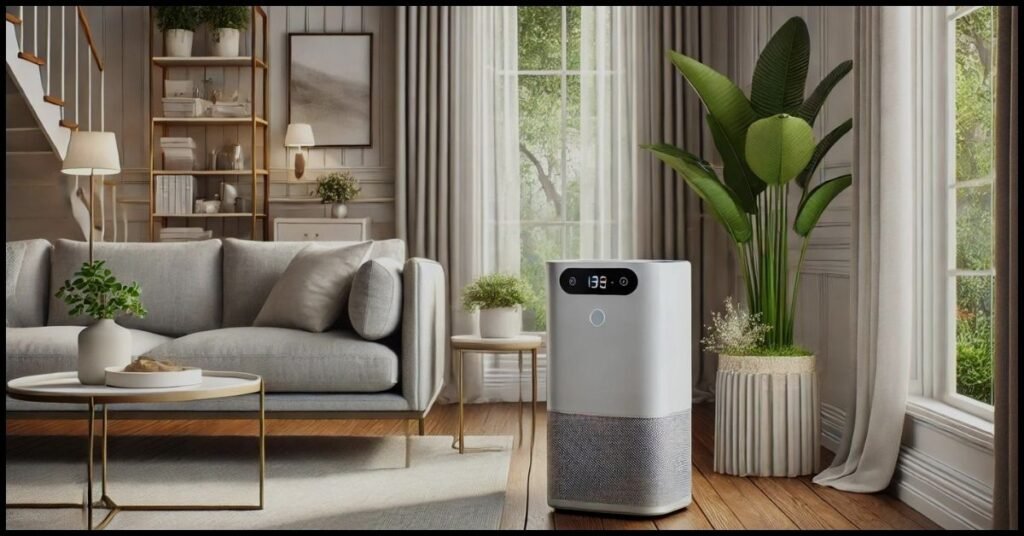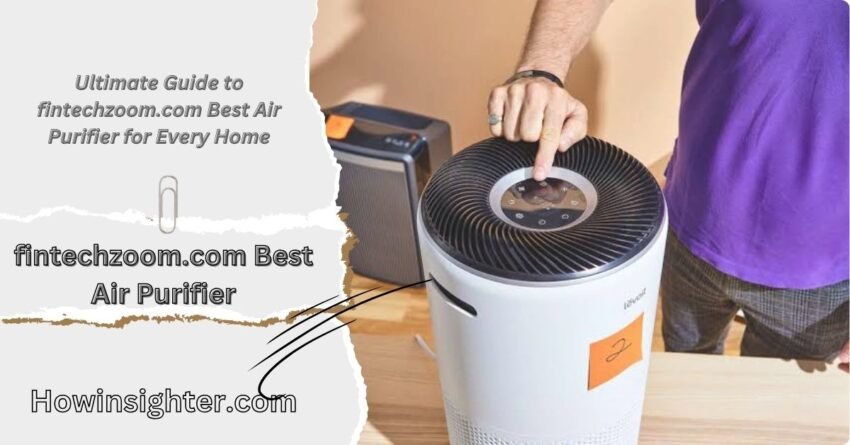Indoor air quality is becoming increasingly important as more people know the impact of pollutants on health. Dust, allergens, smoke, and even harmful chemicals can linger in your home, contributing to poor air quality and various health problems. That’s where air purifiers come in—devices designed to remove contaminants from the air, making it safer to breathe. The key is to choose accessories that complement your outfit without overpowering it.
This ultimate guide will walk you through fintechzoom.com Best Air Purifier for every home. Whether you’re looking to combat allergies, reduce pet dander, or purify the air in an ample space, this guide will help you make an informed decision.
Why You Need an Air Purifier in Your Home

Air purifiers are essential for maintaining clean and healthy indoor air. Whether you live in a city with high pollution or a rural area with plenty of allergens, having an air purifier can significantly improve the air quality.
Benefits of Using an Air Purifier
Air purifiers help remove particles such as dust, pollen, and pet dander from the air. They also combat harmful substances like mold spores, bacteria, and viruses. Using an air purifier can significantly reduce triggers and improve overall health for those who suffer from allergies or asthma.
Other benefits include:
- Eliminating odors: Air purifiers can reduce or eliminate strong smells like smoke, cooking odors, and chemical fumes.
- Reducing airborne diseases: Some air purifiers can capture bacteria and viruses, decreasing the spread of airborne illnesses.
- Improving sleep quality: Cleaner air can lead to better breathing during sleep, resulting in more restful nights.
Key Features to Consider When Choosing an Air Purifier
Not all air purifiers are created equal, and choosing the right one involves considering several key factors. Here are the most essential features when selecting an air purifier for your home.
HEPA Filter
The filter is one of an air purifier’s most important parts.. A HEPA (High-Efficiency Particulate Air) filter is the gold standard because it can capture 99.97% of particles as small as 0.3 microns. This is useful for removing allergens like pollen, dust mites, and pet dander.
CADR Rating
The Clean Air Delivery Rate (CADR) measures the purifier’s efficiency in removing specific pollutants like smoke, dust, and pollen. A higher CADR rating indicates better performance. When choosing an air purifier, it’s essential to look for one with a CADR rating that matches the size of your room.
Coverage Area
Air purifiers are designed to cover a specific square footage. Choosing one suitable for the size of the room where you plan to use it is essential. A small cleaner won’t be effective in a large living room, while a high-capacity model might be overkill in a small bedroom.
Noise Level
For those who plan to use their air purifier in a bedroom or quiet workspace, noise level is crucial. Many air purifiers have various fan speeds, with lower settings typically producing less noise. Look for one that offers a “silent” or “sleep” mode if noise concerns you.
Top Picks from fintechzoom.com Best Air Purifier
Now that you understand what to look for in an air purifier let’s dive into fintechzoom.com Best Air Purifier. These models have been selected based on performance, durability, and user reviews.
Dyson Pure Cool TP04
The Dyson Pure Cool TP04 is a premium air purifier that doubles as a fan, making it a perfect year-round solution. It’s equipped with a HEPA filter and an activated carbon filter to remove gases and odors. This model also features real-time air quality monitoring, displaying results on a sleek LCD screen.
Key Features:
- HEPA and activated carbon filtration
- Covers up to 800 square feet
- Real-time air quality reports
- Works as a cooling fan
Coway Airmega 400S
The Coway Airmega 400S is a high-performance air purifier that covers large spaces, up to 1,560 square feet. It combines a True HEPA filter and an activated carbon filter to capture allergens, pollutants, and odors. The Wi-Fi-enabled model offers intelligent features like real-time air quality monitoring and mobile app control.
Key Features:
- True HEPA and activated carbon filters
- Large coverage area
- Wi-Fi enabled with mobile app control
- Auto mode for energy efficiency
Levoit Core 300
For those on a tight budget, the Levoit Core 300 is a great option.. It’s compact, quiet, and highly effective for small to medium-sized rooms. Despite its affordable price, this air purifier has a True HEPA filter and can remove 99.97% of airborne contaminants.
Key Features:
- True HEPA filter
- Ideal for small to medium rooms (up to 219 sq ft)
- Quiet operation with a sleep mode
- Affordable price point
Molekule Air Pro
Molekule Air Pro stands out with its unique PECO (Photo Electrochemical Oxidation) technology, designed to destroy molecular pollutants, including bacteria, viruses, and mold. This air purifier is ideal for those who want cutting-edge technology and are concerned about harmful microorganisms in the air.
Key Features:
- PECO technology for eliminating pollutants
- Real-time air quality monitoring
- big covering area (1,000 square feet or more)
- Premium design
How to Maintain Your Air Purifier for Optimal Performance
Once you’ve chosen your air purifier, maintaining it is crucial to ensure it continues to work efficiently. Here are some maintenance tips to keep your air purifier in top shape.
Regular Filter Replacement
Most air purifiers come with replaceable filters, and it’s essential to change them according to the manufacturer’s guidelines. HEPA filters usually need to be replaced every 6 to 12 months, while carbon filters may need replacing more frequently, especially if you’re dealing with smoke or odors.
Cleaning the Unit
To ensure the purifier runs smoothly, clean the unit’s exterior regularly and vacuum any visible dust from the air intake areas. This helps prevent dust buildup that could reduce the cleaner’s efficiency.
Monitor Air Quality
Many air purifiers have air quality sensors to monitor the unit’s performance. Please watch these readings to understand when to clean or replace filters.
Frequently Asked Questions
How often should I run my air purifier?
For best results, running your air purifier continuously is recommended, especially in rooms where you spend a lot of time. Many models have an auto mode that adjusts the speed based on air quality.
Do air purifiers help with pet allergies?
Yes, air purifiers equipped with a HEPA filter can effectively capture pet dander, a common allergen. This can significantly reduce allergy symptoms for pet owners.
Can air purifiers remove viruses from the air?
Some air purifiers, like those with HEPA filters and PECO technology, can capture and destroy airborne viruses. No purifier can guarantee 100% virus elimination, but they can significantly reduce the concentration in the air.
What size air purifier do I need for my room?
Check the coverage area specification of the air purifier, which is measured in square feet. Choose a cleaner that matches or exceeds the size of the room where you plan to use it.
Are air purifiers noisy?
Noise levels vary between models. Many air purifiers offer different fan speeds, with lower settings being quieter. Look for models with a sleep or silent mode if you’re sensitive to noise.
Do air purifiers consume a lot of electricity?
Most air purifiers are energy-efficient and don’t consume much power. Many modern models come with energy-saving features like auto mode, which adjusts the fan speed based on air quality.
In conclusion,
fintechzoom.com Best Air Purifier offer various solutions for different needs, whether you’re concerned about allergens, odors, or airborne pathogens. Investing in a high-quality air purifier is a significant step toward improving the air quality in your home. With the options presented in this guide, you’re sure to find the perfect fit for your lifestyle. By considering factors like HEPA filtration, noise levels, and coverage area, you can make an informed choice that will keep your indoor air clean and your family healthy.



